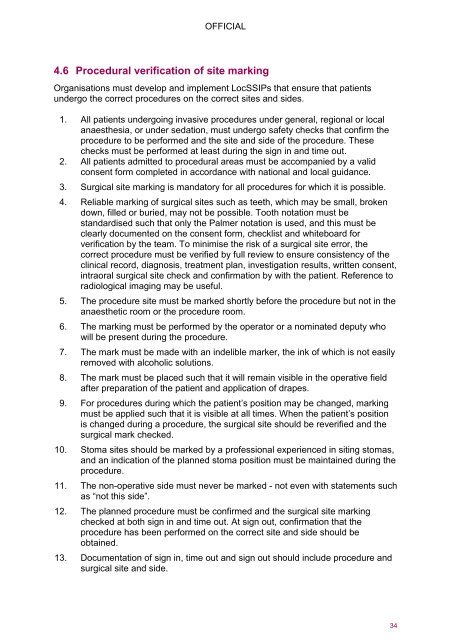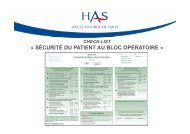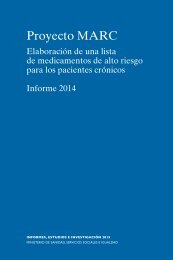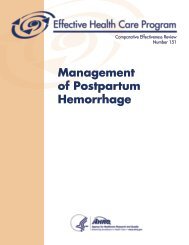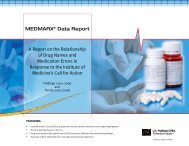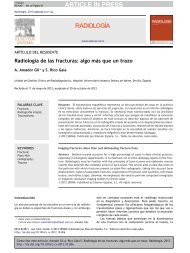for Invasive Procedures (NatSSIPs)
Z3q53
Z3q53
You also want an ePaper? Increase the reach of your titles
YUMPU automatically turns print PDFs into web optimized ePapers that Google loves.
OFFICIAL<br />
4.6 Procedural verification of site marking<br />
Organisations must develop and implement LocSSIPs that ensure that patients<br />
undergo the correct procedures on the correct sites and sides.<br />
1. All patients undergoing invasive procedures under general, regional or local<br />
anaesthesia, or under sedation, must undergo safety checks that confirm the<br />
procedure to be per<strong>for</strong>med and the site and side of the procedure. These<br />
checks must be per<strong>for</strong>med at least during the sign in and time out.<br />
2. All patients admitted to procedural areas must be accompanied by a valid<br />
consent <strong>for</strong>m completed in accordance with national and local guidance.<br />
3. Surgical site marking is mandatory <strong>for</strong> all procedures <strong>for</strong> which it is possible.<br />
4. Reliable marking of surgical sites such as teeth, which may be small, broken<br />
down, filled or buried, may not be possible. Tooth notation must be<br />
standardised such that only the Palmer notation is used, and this must be<br />
clearly documented on the consent <strong>for</strong>m, checklist and whiteboard <strong>for</strong><br />
verification by the team. To minimise the risk of a surgical site error, the<br />
correct procedure must be verified by full review to ensure consistency of the<br />
clinical record, diagnosis, treatment plan, investigation results, written consent,<br />
intraoral surgical site check and confirmation by with the patient. Reference to<br />
radiological imaging may be useful.<br />
5. The procedure site must be marked shortly be<strong>for</strong>e the procedure but not in the<br />
anaesthetic room or the procedure room.<br />
6. The marking must be per<strong>for</strong>med by the operator or a nominated deputy who<br />
will be present during the procedure.<br />
7. The mark must be made with an indelible marker, the ink of which is not easily<br />
removed with alcoholic solutions.<br />
8. The mark must be placed such that it will remain visible in the operative field<br />
after preparation of the patient and application of drapes.<br />
9. For procedures during which the patient’s position may be changed, marking<br />
must be applied such that it is visible at all times. When the patient’s position<br />
is changed during a procedure, the surgical site should be reverified and the<br />
surgical mark checked.<br />
10. Stoma sites should be marked by a professional experienced in siting stomas,<br />
and an indication of the planned stoma position must be maintained during the<br />
procedure.<br />
11. The non-operative side must never be marked - not even with statements such<br />
as “not this side”.<br />
12. The planned procedure must be confirmed and the surgical site marking<br />
checked at both sign in and time out. At sign out, confirmation that the<br />
procedure has been per<strong>for</strong>med on the correct site and side should be<br />
obtained.<br />
13. Documentation of sign in, time out and sign out should include procedure and<br />
surgical site and side.<br />
34


